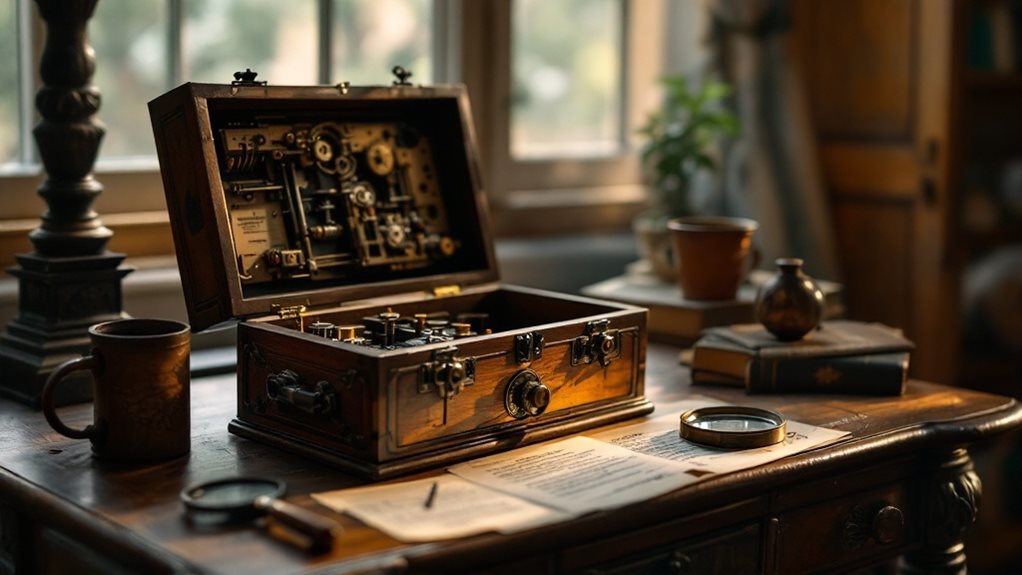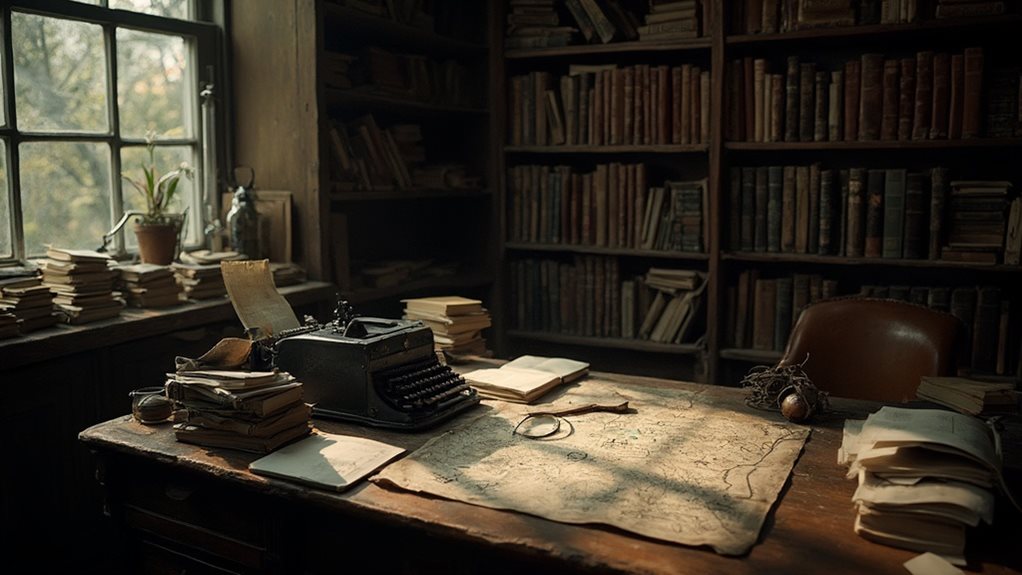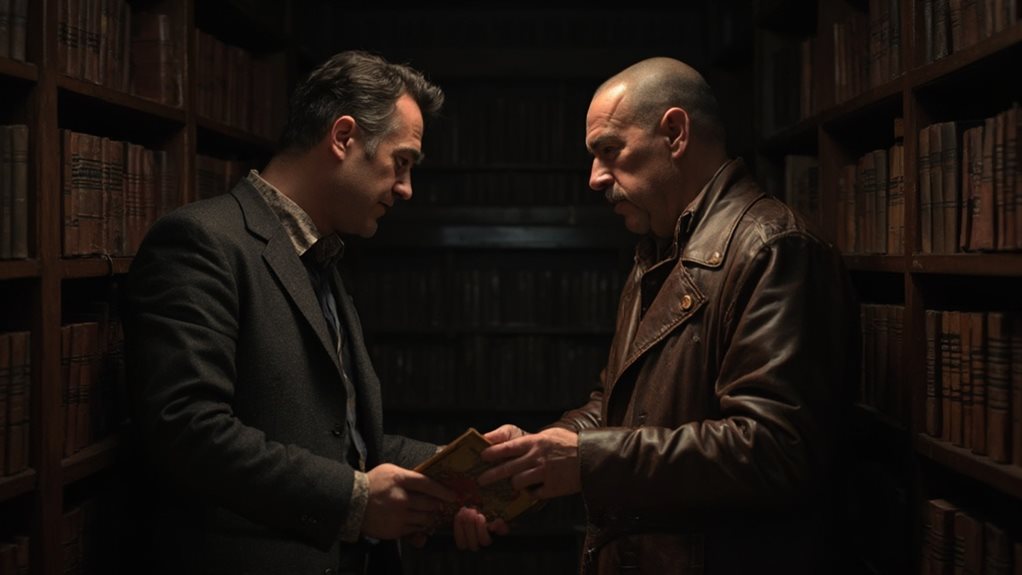
To access hidden skills for unraveling mysteries, individuals must enhance their observational and analytical abilities. By cultivating a keen eye for detail and a methodical thought process, potential detectives can dissect complex scenarios with precision. Training these skills requires a structured approach, focusing on real-life observations and hypothetical problem-solving exercises. An intuitive understanding of human behavior also plays an essential role. With consistent practice, one can uncover deeper layers of insight, promising further exploration into the mysteries of human interaction.
Key Takeaways
- Cultivate observational skills to notice subtle details and inconsistencies in behavior and environments.
- Enhance analytical thinking to systematically piece together clues and evidence.
- Develop intuition to understand underlying motives and predict character actions.
- Practice methodical problem-solving to approach complex puzzles in a structured manner.
- Engage in continuous learning of human psychology and forensic science to improve investigative techniques.
Mastering the Art of Subgenre Selection in Mystery Writing

Why should one explore the art of subgenre selection in mystery writing? Each subgenre, whether it be cozy mysteries, police procedurals, noir, or suspense, harnesses unique mystery tropes and character archetypes that fundamentally shape the narrative's direction and tone.
Selecting a subgenre involves an analytical understanding of its conventions; cozy mysteries often feature amateur sleuths and a lighter tone, whereas noir involves morally ambiguous characters and a darker atmosphere.
Mastery over this choice allows writers to craft more engaging, genre-fitting stories. Such precision not only meets reader expectations but also enhances the depth and intrigue of the mystery itself.
Crafting the Perfect Crime Setting: Tips and Techniques
Setting the stage for a crime in fiction requires more than just pinning a location on a map; it demands an in-depth exploration into the fabric of the place, weaving it seamlessly into the narrative to enhance authenticity and tension.
Crafting a compelling crime scene involves meticulous attention to atmospheric details. These elements not only set the mood but also subtly guide the reader's perceptions and emotions.
The echoes in an empty hallway, the starkness of a dimly lit street, or the claustrophobic closeness of a cramped room can all amplify the suspense and emotional intensity, making the setting a silent narrator in the unfolding mystery.
Building Dynamic Character Relationships in Mystery Plots

How do the intricate webs of relationships among characters enhance the intrigue of a mystery plot? In mystery storytelling, understanding character motivations is pivotal. Relationships are not merely connections but are threads that form a tapestry of conflict and resolution. The dynamic interplay between characters fuels the plot, pushing it towards unforeseeable twists. Observing how characters navigate these relationships provides depth and complexity, making the storyline not just about the 'whodunit' but also the 'why'.
| Character | Motivation | Impact on Plot |
|---|---|---|
| Detective | Truth | Drives investigation |
| Suspect 1 | Revenge | Introduces red herrings |
| Suspect 2 | Protect family | Adds emotional layers |
| Victim | Unrevealed secrets | Central to mystery |
| Ally | Justice | Supports resolution |
This structure helps in dissecting how each relationship influences the narrative's progression and resolution.
Discovering Your Hidden Talents for Mystery Solving
Many individuals possess latent abilities that, when uncovered, can greatly enhance their aptitude for solving mysteries. These hidden talents often manifest as exceptional observational skills, analytical thinking, or intuitive understanding of human behavior.
The process of identifying these skills requires a methodical approach: close self-assessment, soliciting feedback from others, and experimenting with various mystery-solving scenarios.
Cultivating a Positive Mindset for Creative Mystery Writing

While fostering a positive mindset might seem secondary in the domain of creative mystery writing, it is actually central to unfastening a writer's full potential.
Mindset shifts are essential; they transform obstacles into opportunities for narrative innovation and complex character development.
Creative visualization aids authors in constructing vivid, immersive worlds and intricate plots that engage readers.
By mentally exploring various scenarios and outcomes, writers can anticipate reader reactions and refine suspense mechanisms.
This strategic approach not only enhances storytelling but also bolsters writers' resilience against critique and the often solitary nature of the writing process, thereby fostering sustained creative output.
Frequently Asked Questions
How Can Technology Aid in Crafting a Mystery Plot?
Technology enhances mystery plot crafting through digital tools that support interactive storytelling. These tools enable authors to construct complex narratives, ensuring details are consistent and engaging, thereby enriching the reader's investigative experience.
What Role Does Historical Context Play in Mystery Genres?
Historical context considerably shapes mystery genres by providing historical accuracy and cultural influences that enrich narratives, deepen authenticity, and enhance reader engagement through accurate portrayals of societal norms and historical events.
Can Music Influence the Mood of a Mystery Narrative?
Music can greatly influence a mystery narrative's mood through its musical atmosphere, enhancing emotional resonance and tension. Carefully selected tunes augment storytelling by subtly guiding the listener's psychological response and deepening the plot's impact.
How Do Authors Balance Multiple Plot Twists Without Confusing Readers?
Maneuvering through a labyrinth of intrigue, authors maintain plot coherence by carefully pacing revelations and intertwining subplots. This method enhances reader engagement, ensuring clarity amidst complexity and fostering a deep connection with the narrative's unfolding mysteries.
What Are Effective Ways to Introduce Supernatural Elements in Mysteries?
To introduce supernatural elements in mysteries effectively, authors integrate supernatural symbolism and paranormal characters subtly. These elements should enhance the intrigue without overwhelming the plot, maintaining a balance that keeps the narrative engaging and coherent.
Conclusion
In sum, the quintessence of mystery writing lies not merely in crafting enigmatic scenarios but in the adept selection of subgenres, the meticulous construction of crime settings, and the dynamic interplay among characters. By unearthing and refining hidden skills, writers transform into literary alchemists, turning the base metal of raw ideas into the gold of intricate, compelling narratives. Fostering a mindset of perpetual growth guarantees that the pen remains mightier than the sword in the ceaseless quest to captivate and intrigue.

